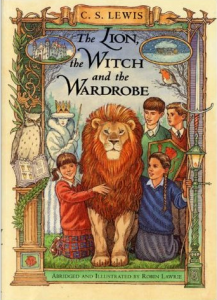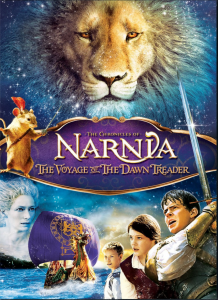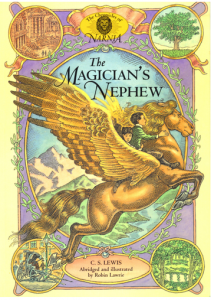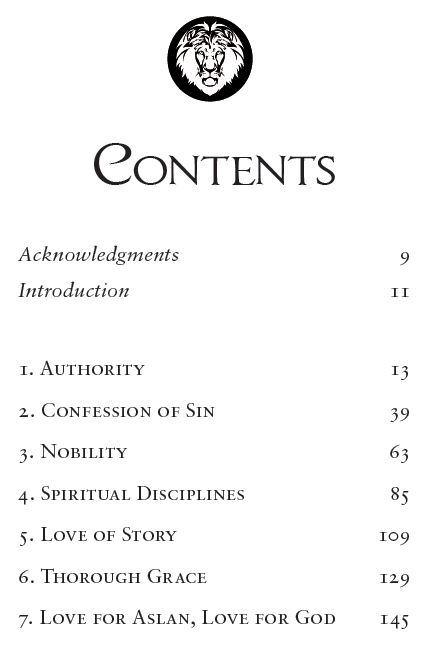The World Tonight with Robin Lustig
Wed, 25 Apr 12Duration:
38 mins
Available:
7 days remainingDavid Cameron says the government will stick to its economic programme despite figures showing that the UK has slipped back into recession. The Culture Secretary, Jeremy Hunt, has defended the way he handled the bid by News Corporation to take over BSkyB saying he did so with "scrupulous fairness". News Corp's chairman Rupert Murdoch has told the Leveson inquiry it was a "complete myth" that he used the influence of his newspapers to seek favours from politicians.The World Tonight with Ritula Shah
Tue, 24 Apr 12Duration:
38 mins
Available:
6 days remainingThe Culture Secretary, Jeremy Hunt, who's facing calls to stand down, says he behaved with "absolute integrity" when considering News Corporation's proposed takeover of BSkyB. We'll be discussing James Murdoch's evidence to the Leveson inquiry and its implications. The United Nations special envoy to Syria, Kofi Annan, is gravely concerned by reports that Syrians who talk to UN observers are being harassed or killed. The detective in charge of the inquiry into the death of the MI6 officer, Gareth Williams, has said she believes someone else was involved. Also tonight, does the Arab world hate women?
Thursday, 26 April 2012
The Leveson Inquiry: News Corporation BSkyB (BBC Podcasts)
A couple of news articles from The World Tonight BBC podcast on the Leveson Inquiry.
Labels:
English Teaching
Mont-Saint-Michel hilltop castle
Mont-Saint-Michel, a tourist attraction and UNESCO world heritage site in northwestern France, seen on February 2, 2012.
From the Images from the Air collection from The Atlantic.
From the Images from the Air collection from The Atlantic.
Wednesday, 25 April 2012
T4G Panels
T4G Panels (Audio)
Complementarianism
Greg Gilbert, John Piper, Ligon Duncan, Russell Moore
Preaching
Al Mohler, C.J. Mahaney, Ligon Duncan, Mark Dever
Gay Marriage
Al Mohler, Mark Dever
Contextualization
Al Mohler, Kevin DeYoung, Mark Dever, Matt Chandler, Thabiti Anyabwile
Inerrancy
Al Mohler, John Piper, Ligon Duncan, Mark Dever, Peter Williams, Simon Gathercole
Celebrity Pastors
Ligon Duncan, Thabiti Anyabwile, Carl Trueman, C.J. Mahaney, David Platt
Greg Gilbert, John Piper, Ligon Duncan, Russell Moore
Preaching
Al Mohler, C.J. Mahaney, Ligon Duncan, Mark Dever
Gay Marriage
Al Mohler, Mark Dever
Contextualization
Al Mohler, Kevin DeYoung, Mark Dever, Matt Chandler, Thabiti Anyabwile
Inerrancy
Al Mohler, John Piper, Ligon Duncan, Mark Dever, Peter Williams, Simon Gathercole
Celebrity Pastors
Ligon Duncan, Thabiti Anyabwile, Carl Trueman, C.J. Mahaney, David Platt
Labels:
Bible Teaching Mp3
Monday, 23 April 2012
Ed Stetzer on the need to Understand our Times
Monday April 16, 2012 ~ 2 Comments

In January 2010, I spoke at the Jacksonville Pastors Conference. It's always a good conference with a great opportunity to encourage pastors (they go to great effort to serve the pastors-- and I look forward to being back in 2013).
Anyway, the message I gave tied into the theme and I entitled it, "Engaging Well-- Staying Faithful in Faithless Times." The editor of Preaching magazine, Michael Duduit, was in attendance and asked if I could turn the message into an article. I did, and they ran it here. I will be running the series-- a primer on contextualization for pastors-- over the next few weeks.
Many years ago, the apostle Paul confronted a Christless culture in Athens, Greece. Yet his challenge on that day is identical to the challenge we face in our culture. How do we remain faithful in faithless times? How can we connect with culture without becoming trapped or ruined by the culture? Some leaders feel the solution is simple: Just engage the culture. The problem is that engaging culture means different things to different people. Others say you need to be relevant. Whose definition should we use? Both suggestions--engaging culture and being relevant--can be steps in the right direction; but without definition, they are fraught with danger. Some who have gone before us have failed at this task. The current culture of our North American landscape is filled with churches that once preached the gospel but no longer do so. Why? Because they didn't capture their culture; their culture captured them.
The apostle Paul lived in faithless times, yet he remained faithful. His missionary approach to connect with people and culture is considered a pattern to imitate. How did he endure with such effectiveness for the kingdom? He began with conforming himself to Christ. Paul said, "Be imitators of me, as I also am of Christ" (1 Cor. 11:1). Paul presented himself as an example from which we can learn because Christ was his example to follow.
Equal parts theologian, businessman and philosopher, Paul walked headlong into the heart of Greek culture in order to engage it. He never considered ignoring or avoiding culture. Rather, he engaged with meaningful dialogue on the home field of those he attempted to influence with the gospel. The spiritual conversation began this way:
"Then Paul stood in the middle of the Areopagus and said: 'Men of Athens! I see that you are extremely religious in every respect. For as I was passing through and observing the objects of your worship, I even found an altar on which was inscribed: TO AN UNKNOWN GOD. Therefore, what you worship in ignorance, this I proclaim to you. The God who made the world and everything in it--He is Lord of heaven and earth and does not live in shrines made by hands. Neither is He served by human hands, as though He needed anything, since He Himself gives everyone life and breath and all things" (Acts 17:22-25).
By watching Paul in this story we learn from his example how to engage our context today, staying faithful in faithless times. Three clear lessons emerge from the story.
To Engage Well Today, We Must Discern the Times
So, how do we understand culture? Paul engaged the cultural context where he found himself. "While Paul was waiting for them in Athens, his spirit was troubled within him when he saw that the city was full of idols" (Acts 17:16). Our cities and towns today are filled with idols. All around us are idols of money, power, sex and knowledge. John Calvin said, "the human heart is an idol factory." Idols take the space that belongs to Christ alone. Each community produces its own unique idols. Part of understanding a culture is understanding its unique idols.
Paul's cultural engagement was challenged when he was labeled as a "pseudo-intellectual" by the Epicurean and Stoic philosophers (Acts 17:18). Still, he pressed into culture. "For as I was passing through and observing the objects of your worship, I found an altar on which was inscribed: TO AN UNKNOWN GOD" (Acts 17:23).
Paul openly approached the culture and demonstrated a strong desire to understand who they were and what was important to them. He was aware of their philosophies, worldview and religious beliefs. He even said at one point, "I see that you are extremely religious in every respect" (v. 17:22). His passion for engaging the culture showed how he was grieved by its idols. He remained aware of the religious and spiritual questions with which people struggled.
The same Paul, in front of different people, said in Acts 13:16, "Men of Israel, and you who fear God, listen!" Paul addressed different cultures at different starting points, yet he brought them to the same place. He gave a message rich in history of the Jews to the men of Israel (vv. 13:16-26).
Paul discerned the context but brought people to the Savior. He made necessary adjustments to communicate well. We are called to do the same that we might proclaim the gospel that changes everything. Paul moved people from where they were to an understanding of a bloody cross and an empty tomb. In Acts 13:32-33, he concluded, "And we ourselves proclaim to you the good news of the promise that was made to our forefathers. God has fulfilled this to us their children by raising up Jesus."
Relevance is a tool; gospel proclamation is the goal. Too many people pursue cultural relevance as the goal. Relevance is merely a tool that can shape the way we do ministry. The reality is that the "how" of ministry is shaped by the "who, when and where" of culture. Separating ourselves from culture is not possible, though some try. Culture is the pond in which we swim and the lens through which we see the world. Culture is the context in which we proclaim a biblically faithful, never changing gospel.
When I led the North American Mission Board Center for Missional Research, we surveyed 1,200 people about heaven. The findings may help shape the right question to start the conversation. We asked if they could strongly agree with this question: "If you were to die today, do you know for sure you'd go to heaven?" Another question we specifically asked them was: "How often do you wonder, 'If I were to die today, do I know for sure I'd go to heaven?'"
That question has been the standard evangelical pick-up line for the past 50 years. Our conversation starts out, "Hey, how are you? How are you doing? Hey, listen, just wondering, if you were to die today..." You subtly work it into every awkward conversation. You ask, "How's the team doing?" They answer, "Oh, they're doing pretty good." Then you pop the question, "Hey, listen, if you were to die today, do you know...?"
We wanted to know if people were really asking that question. Why? Because the Bible teaches us, "But set apart the Messiah as Lord in your hearts, and always be ready to give a defense to anyone who asks you for a reason for the hope that is in you" (1 Pet. 3:15). Believers should focus on answering the questions that people in the culture actually are asking. One of the things I love about my work is to research what people in the culture are asking. So we called 1,200 people and we asked, "How often do you wonder, 'If I were to die today, do I know for sure if I would go to heaven?'"
I assumed a low percentage of people think about that question. I have a lot of conversations with people who are far from understanding the gospel, and they never seem anxious about dying and facing eternity without Christ. To my surprise, about 20 percent of people indicated they wondered at least once a week if they would go to heaven if they were to die. Do you know why I was surprised that a fifth of respondents wondered if they would go to heaven at least weekly? I was surprised, because I had experienced something different.
To the question, "How can I find more meaning and purpose in my life?" an even a higher number (1 in 3) indicated they wondered about it every day. The reality is that people are asking all kinds of questions in our culture, and the gospel answers those questions with Jesus Christ. We must prepare to engage our context as Paul did, adjusting to different people but bringing them all to the gospel.
Often we are guilty of thinking, "Well, if they would just come to church and think the way we think, act the way we act, dress the way we dress and vote the way we vote, they'd come to know Jesus." It is unfortunate, but many congregations simply busy themselves with moralizing the unconverted rather than preaching the gospel to the lost.
Church members too often have been taught that the goal of discipleship is to get away from the world. We need to encourage the opposite. Maybe more of us need to hear the criticism Jesus often heard: You are too close to the wrong people. May that be said about all of us! So to engage well and faithfully today, we have to discern the times.
Note: I will cover the final two lessons in future posts.
Monday April 23, 2012 ~ 0 Comments
 Last
week, we began a series based on a sermon I gave at a pastors
conference which I considered a primer on contextualization for
pastors. Entitled "Engaging Well," part one discussed the need to discern the times. Today, we turn to the the need to understand the era in which we live.
Last
week, we began a series based on a sermon I gave at a pastors
conference which I considered a primer on contextualization for
pastors. Entitled "Engaging Well," part one discussed the need to discern the times. Today, we turn to the the need to understand the era in which we live. Every era and culture has influential voices. Paul understood which voices were affecting the lives of Athenians: "Then also, some of the Epicurean and Stoic philosophers argued with him. Some said, 'What is this pseudo-intellectual trying to say?' Others replied, 'He seems to be a preacher of foreign deities' because he was telling the good news about Jesus and the resurrection. They took him and brought him to the Areopagus, and said, 'May we learn about this new teaching you're speaking of?'" (Acts 17:18-19).
Paul began to preach a plain message in verse 23: "What you worship in ignorance, this I proclaim to you." In verse 24, he declared the supreme position of God as Creator, "The God who made the world and everything in it--He is Lord of heaven and earth and does not live in shrines made by hands."
Are there universal, underlying principles illustrated in Paul's dialogue? Yes. Quoting Epicurean and Stoic philosophers is rare today, but people sure are quoting Oprah a lot. I call it the Oprahfication of American religion. It is the worldview that says that truth is relative, and the goal of spirituality is journeying and personal peace.
The reality is that sometimes we forget the worldview of the era in which we live. The world is not filled with people who are aware they are spiritually dead and looking for Jesus. Today, people think they are spiritually alive and are finding their own path to God. God is fine with however they wish to live because the only thing they know is that Jesus said, "Judge not, lest ye be judged."
The command of Jesus is to proclaim the gospel in our own age. It is not merely to convert the thought pattern of our peers. To communicate clearly, we've got to understand the time in which we live. Preaching against all the bad things out there is easy. As a matter of fact, preaching against culture almost has become a regular occurrence in most churches and most pastors' conferences.
That is not the answer. Preaching against culture is like preaching against someone's house. It's where they live. There's good in it; there's bad in it; but preaching against all of it doesn't make sense. What makes sense is to preach against sin and tell Christians to go tell sinners about Jesus.
You can't engage well simply by going with the culture. You can't engage evangelistically without living in the culture. So how do we preach Christ in the culture without being captured by it? Missiologists have debated this for some time. In every culture, we find there are certain things we're going to hold onto as tools for mission and certain things we're going to reject as antithetical to the mission.
In every culture, there are going to be things we adopt. We're going to say there are certain things that are value-neutral that we can say we can adopt because they helps us do what God has called us to do in the time and place where we find ourselves. We can adopt those things, but there are other things we have to adapt. There are some things that need to be changed. For example, we may adapt the clothes the world wears. We don't just adopt all the clothes the world wears (as the father of three daughters, I assure you this is true).
The musical styles used in worship can be a tough issue for many churches. There is no such thing as Christian music, only Christian lyrics. So again, some things we adopt and some we adapt. There are parts that we adapt such as the way we dress. There are things in every culture we must reject because they lead to sin. Doing so involves us understanding when we live and proclaiming a gospel that is unchanged by time.
Jude 3 reminds us to "contend for the faith." It is the reminder that the content of our faith must be held onto tightly. We are reminded by 1 Corinthians 9:22-23 that we are to contextualize. Paul wrote, "I have become all things to all men so that by all possible means I might save some." So I'm contending for the gospel and contextualizing the gospel by living it in different settings. To engage well we must contend and contextualize.
If we're going to engage the culture and the time in which we find ourselves, we are going to hold some issues with an open hand. The reality is some of us are going to sing different music, meet at different times and engage in different elements in the worship service. The ministry of the kingdom calls us to preach, proclaim and believe the same gospel.
The challenge is that some people want to contend for everything, ready to battle over every tertiary issue. Music, dress, hairstyles and the number of times you attend church each week all are debated. From pulpit to blog post, some have chosen a decade they prefer and will fight the rest of the body of Christ to stay in it. They will fight to drag the culture back to it, as well. They're filled with people identifying things for which we contend that are clearly things for which we contextualize.
Labels:
Culture
Series: Leland Ryken explains why Christians should read Camus
Reading Camus’s “The Stranger” with Ryken
The Gospel Coalition’s first series of “Commending the Classics” (where Leland Ryken guides us in a weekly discussion of Albert Camus’s The Stranger) is now underway.In a previous post he explained why Christians should read Camus.
Today he introduces the book.
Toward the end he discusses the schedule of readings:
The format for our discussion will be a chapter-per-week schedule. The guides that I will post for each chapter are intended as a preview to reading and discussing the week’s chapter. This means that we will start our trek through the novel with the next posting. I will provide both analysis and sections titled “for reflection or discussion.” The interaction will take place by way of “comments” on this site. Responses to this week’s introduction are welcome.There are six chapters in part 1 of The Stranger, and five chapters in part 2. So it looks like the schedule will be as follows, with a new post each Wednesday:
Part 1
- Ch. 1, April 25
- Ch. 2, May 2
- Ch. 3, May 9
- Ch. 4, May 16
- Ch. 5, May 23
- Ch. 6, May 30
- Ch. 1, June 6
- Ch. 2, June 13
- Ch. 3, June 20
- Ch. 4, June 27
- Ch. 5, July 4
I end with a note on English translations of The Stranger. I first fell in love with this book in Stuart Gilbert’s translation (available from Amazon from third-party vendors). This is the translation that made the novel a classic of English-language literature. Its style sparkles with descriptive and aphoristic brilliance. Among more recent translations is one by Matthew Ward (Vintage); since it is available directly from Amazon, it will be the “official” translation for purposes of this discussion. I will manage the discussion in such a way that either translation can be used. I myself regard Ward’s translation of Mother as Maman to be unnecessarily distracting.
Narnia Resources (from Andy Naselli)
Ten Narnia Resources
But she’s already looking forward to reading them again and again and again.
We utilized ten resources to enjoy Narnia, and I recommend them all:
 1. The Unabridged Books
1. The Unabridged Books
These are essential. All other resources merely supplement them.It is pure pleasure to read these aloud to your children.
I chose to get a boxed set in hardcover.

It’s also available in softcover.

Those sets have the same simple illustrations by Pauline Baynes sprinkled throughout them that I recall seeing when reading this set as a child.
This one-volume set (which I think is the same as this one) is large but very nice. It includes the original illustrations by Pauline Baynes, but they are hand-colored instead of black and white.
You can view thirteen of Pauline Baynes’s color illustrations and seven maps at the bottom of this page.
2. Graphic Novels
- The Magician’s Nephew: Graphic Novel (64 pp.)
- The Lion, the Witch and the Wardrobe: Graphic Novel (64 pp.)
Although these books horrify purists, I like them. I used them to introduce these two stories to Kara, and they helped draw her into the world of Narnia. She loves these books (though now she loves the unabridged books more). She loves pictures paired with stories; they engage her and stimulate her imagination.
 The first book of the seven books that we read is The Lion, the Witch and the Wardrobe, and we read the graphic novel first:
The first book of the seven books that we read is The Lion, the Witch and the Wardrobe, and we read the graphic novel first:- When we got to the part where the white witch kills Aslan, Kara started sobbing with grief.
- When we got to the next chapter and read the title, “The Spell Is Broken,” she cheerfully remarked through her tears, “That’s good news!”
- When I asked her if Aslan reminded her of anyone (and this is during her first time ever hearing the story), without blinking she replied, “Jesus.”
- The day after finishing the book, I asked her, “So what do you think of The Lion, the Witch, and the Wardrobe?” She replied, “Well, I don’t like the witch, but I like the lion and the wardrobe.”
3. Focus on the Family Radio Theatre
It’s abridged. The unabridged audio is about 31 hours, and this is about 22 hours. Among other things, this abridged version removes the few instances of objectionable language (see resource #9 below: “Some Caveats”).
Douglas Gresham, one of C. S. Lewis’s two step-sons, briefly introduces and concludes each book.
Related: Here are other Focus on the Family Radio Theatre stories:
- Amazing Grace: The Inspirational Stories of William Wilberforce, John Newton, and Olaudah Equiano
- Anne of Green Gables: An Endearing Story of a Young Girl Whose Spirit Could Never Be Broken
- At the Back of the North Wind
- Ben Hur: An Epic Tale of Revenge and Redemption
- Billy Budd, Sailor: A Classic Tale of Innocence Betrayed on the High Seas; Adapted from the Novel by Herman Melville
- Bonhoeffer: The Cost of Freedom; A Man Whose Message Could Not Be Silenced (cf. my thoughts)
- A Christmas Carol: By Charles Dickens
- Father Gilbert Mysteries: Collector’s Edition; All 9 Father Gilbert Mysteries
- The Hiding Place: The Acclaimed Story of Corrie Ten Boom
- The Legend of Squanto: An Unknown Hero Who Changed the Course of American History
- The Life of Jesus: Dramatic Eyewitness Accounts from the Luke Reports (cf. my thoughts)
- Little Women
- Les Misérables: Victor Hugo’s Masterpiece
- The Screwtape Letters: First Ever Full-cast Dramatization of the Diabolical Classic (cf. my review)
- The Secret Garden: Frances Hodgson Burnett; A New Way to Experience the Beloved Classic
- Silas Marner: The Weaver of Raveloe; The Transforming Power of a Child’s Love
- Traveling Home for Christmas: Four Stories That Journey to the Heart of Christmas (The Shoemaker’s Gift, The Gift of the Maji, Christmas Day at Kirkby Cottage, and Christmas by Injunction)
4. Unabridged Audiobooks
We also listened to the unabridged audiobooks by Harper Children’s Audio:
They are very high quality (though not in the same class as Jim Dale’s masterful reading of the Harry Potter series).
A different narrator reads each book, and all of them are English actors.
- The Magician’s Nephew, narrated by Kenneth Branagh (who stars in Henry V)
- The Lion, the Witch and the Wardrobe, narrated by Michael York
- The Horse and His Boy, narrated by Alex Jennings
- Prince Caspian, narrated by Lynn Redgrave
- The Voyage of the Dawn Treader, narrated by Derek Jacobi
- The Silver Chair, narrated by Jeremy Northam
- The Last Battle, narrated by Patrick Stewart
5. BBC’s TV Serial
- The Lion, the Witch and the Wardrobe (169 min.)
- Prince Caspian (56 min.)
- The Voyage of the Dawn Treader (109 min.)
- The Silver Chair (168 min.)
I watched these many times as a child on VHS and loved them. Now I own them on DVD so my children can enjoy them, too.
Compared to modern films, the pace is slow (which serves my daughter well) and the special effects tame.
The films stick pretty closely to the storyline of the books, but Kara was quick to point out ways that the films deviate (even if only slightly) from the books!
6. Blockbuster Films
Three of the Narnia books are adapted into blockbuster films (Wikipedia):- The Lion, the Witch and the Wardrobe (2005, Disney)
- Prince Caspian (2008, Disney)
- The Voyage of the Dawn Treader (2010, 20th Century Fox)



Pros:
- quality cinematography
- cool special effects
- good acting
- They focus on intense scenes, especially violent battle scenes. We skipped the really intense scenes and watched other intense scenes at 4x speed or higher because they are too intense for a little girl.
- They drastically revise the storyline of the books.
- They gut the books of their core message and turn them into feel-good messages about believing in yourself and having faith (I always ask, “Faith in what or whom?!”). For example, The Voyage of the Dawn Treader ends with Carrie Underwood singing “There’s a Place for Us.” Is the message of the book really that “we can be the kings and queens of anything if we believe” and that “exactly who we are is just enough”? Incredible. They turn a book steeped in Christian themes into narcissistic self-esteemism.
- Prince Caspian (May 17, 2008)
- Dawn Treader (December 11, 2010)
So, here is my gradebook on these movies as adaptations so far:
- The Lion, the Witch and the Wardrobe — B
- Prince Caspian — D minus
- The Voyage of the Dawn Treader — C
Here is how I would rate the movies as
stand alone ventures, if C. S. Lewis had never existed, and producers
had not been laboring under the burden of finding someone who understood
the books. Of course, we shouldn’t be too hard on them. They only have
many millions of dollars. How could they possibly find somebody who
understands the books? Give them a break.
See also Christopher Cowan, “C. S. Lewis, Prince Caspian, and Women in Combat: Part 1 and Part 2,” Gender Blog (May 20–21, 2008).
- The Lion, the Witch and the Wardrobe — A
- Prince Caspian — B
- The Voyage of the Dawn Treader — A minus
7. Theater
 It just so happened that a nearby play of The Lion, the Witch and the Wardrobe coincided with our reading the Narnia books.
It just so happened that a nearby play of The Lion, the Witch and the Wardrobe coincided with our reading the Narnia books.It was Kara’s second play, and she loved the experience. But as with the film adaptations, she disliked how much artistic license the play took with the storyline. (I agree.)
8. Pretending
We (mostly my dear wife!) have spent dozens of hours play-acting with Kara as all sorts of Narnia characters. Kara lives in an imaginary world, and she constantly reenacts scenes and improvises new ones using the characters from the stories (and sometimes conflates imaginary worlds: Narnia meets Winnie the Pooh!).It can get exhausting living in this pretend world, but it’s worth it. It’s good for her on so many levels (e.g., see Nurture Shock, ch. 8).
We took our time enjoying the seven books, spending about two to three weeks in each one. We read each at least three times before moving on to the next one:
- I read the unabridged version aloud once.
- We listened to the abridged version by Focus on the Family Radio Theatre at least once.
- We listened to the unabridged version at least once.
9. Some Caveats
Kevin Bauder’s “The Christian and Fantastic Literature—Part Six: The Chronicles of Narnia” (In the Nick of Time [March 25, 2005]) praises the Narnia series but adds two caveats:
This is not to say that the story is
without flaws. In fact, it has two defects that sharply limit its
usefulness. A discussion of the Chronicles would not be complete without
mentioning these defects.
First, Lewis sometimes puts profane language in the mouths of his characters [e.g., taking the Lord’s name in vain and Uncle Andrew’s repeated line in The Magician’s Nephew].
To be fair, Lewis would probably not have regarded these uses as
profanity. Most likely he would have argued that the language was not
gratuitous and, therefore, was not speaking in vain of holy things. This
is not convincing, however. A certain number of oaths serve no apparent
purpose other than to add color to the story. They do cross the line
into profanity, which is especially disappointing in stories that were
written for children. Even though these occasions are rare, once is too
often.
Second, some of Lewis’s theology was
aberrant, and one or two of his quirks do show up in these stories.
Probably the most serious is Lewis’s inclusivism. In the final story (The Last Battle)
a young worshipper of the demon Tash is admitted into the “true
Narnia”—Lewis’s version of heaven. Lewis uses Aslan to explain that
whatever worship was offered sincerely to Tash was really offered to
Aslan. Such episodes reflect one of the errors of Lewis’s theology,
namely, that all sincere people can be received by God, even if they
have not received the truth of Christianity. This is not a minor error.
The error is compounded precisely because
the fantastic presentation makes it seem appealing and palatable. The
flaw is magnified further by being offered to children who cannot be
expected to recognize it for what it is. Lewis’s story has the power to
capture the child’s imagination and to render it sympathetic to inclusivism before the child ever develops the capacity to think critically about the issue. This is a serious matter.
Kevin DeYoung’s “Cautions for Mere Christianity” (January 28, 2011) highlights “two significant problems” with Mere Christianity, and the second in particular appears in the Narnia series:- Lewis rejects a penal substitutionary atonement.
- Lewis “believed in what we might roughly call ‘anonymous Christians.’ That is, people may be saved through Christ without putting explicit faith in Christ.”
10. Douglas Wilson’s Book on Narnia
 I read this book three times—twice with my ears and once with my eyes:
I read this book three times—twice with my ears and once with my eyes:
Douglas Wilson. What I Learned in Narnia. Moscow, ID: Canon, 2010.
I listened to this audiobook both before and after reading the series
with my daughter, and then I read it and marked it up. Wilson draws
insightful lessons from the Narnia stories.I was going to share some excerpts, but I highlighted far too many pithy, shrewd observations to fit here.
Relatively few books are worth reading a second or third time. This is one of them.
Some trivia: My favorite character (other than Aslan, of course) is Puddleglum. As Wilson says, “Puddleglum is a character who has a comically dour and gloomy exterior, but he turns out to be quite useful, fiercely loyal, and suspicious about the world in all the right ways” (p. 91).
Related
Articles- “That’s Why It’s Called Progressive Sanctification” (Eustace Scrubb illustration)
- “Is C. S. Lewis the Patron Saint of American Evangelicalism?”
- C. S. Lewis, “On Three Ways of Writing for Children,” in Of Other Worlds: Essays and Stories (New York: Harvest, 1966), 22–34.
- Alan Jacobs, “The Chronicles of Narnia,” in The Cambridge Companion to C. S. Lewis (ed. Robert MacSwain and Michael Ward; Cambridge: Cambridge University Press, 2010), 265–80.
- Thomas C. Peters, “The Chronicles of Narnia,” in Simply C. S. Lewis: A Beginner’s Guide to the Life and Works of C. S. Lewis (Wheaton: Crossway, 1997), 77–110.
- George Sayer, “Into Narnia,” in Jack: A Life of C. S. Lewis (Wheaton: Crossway, 2005), 311–19.
- Into the Wardrobe—a C. S. Lewis web site
- Alan Jacobs, The Narnian: The Life and Imagination of C. S. Lewis (San Francisco: HarperOne, 2005).
- Paul F. Ford, Companion to Narnia: A Complete Guide to the Magical World of C. S. Lewis’s The Chronicles of Narnia (2nd ed.; San Francisco: HarperSanFrancisco, 2005). Includes 21 illustrations and 11 diagrams. Abridged: Pocket Companion to Narnia: A Guide to the Magical World of C. S. Lewis.
- Planet Narnia: You may find Michael Ward’s thesis fantastical at first, but at the end you’ll be much less skeptical if not convinced. Watch BBC’s The Narnia Code, and read one of his two books: Planet Narnia: The Seven Heavens in the Imagination of C. S. Lewis (Oxford: Oxford University Press, 2008), which is the longer and more academic version, or The Narnia Code: C. S. Lewis and the Secret of the Seven Heavens (Carol Stream, IL: Tyndale House, 2010).
- Colin Duriez, A Field Guide to Narnia (Downers Grove: IVP, 2004). The cover says, “An Overview of the Life and Word of C. S. Lewis | A-to-Z Coverage of Narnian Beings, Places, Things and Events | An Introduction to Key Spiritual Themes.” It’s an accessible, brief introduction (240 pp.). Cf. Colin Duriez, The C. S. Lewis Encyclopedia: A Complete Guide to His Life, Thought, and Writings (Wheaton: Crossway, 2000).
- Christin Ditchfield, A Family Guide to Narnia: Biblical Truths in C. S. Lewis’s the Chronicles of Narnia (Wheaton: Crossway, 2003). Two later books by Ditchfield repeat corresponding sections from this book but include illustrations by Justin Gerard: (1) A Family Guide to The Lion, the Witch and the Wardrobe (Wheaton: Crossway, 2005) and (2) A Family Guide to Prince Caspian (Wheaton: Crossway, 2008).
- Kurt Bruner and Jim Ware, Finding God in the Land of Narnia (Wheaton: Tyndale House, 2004).
- Brian Sibley, The Land of Narnia (New York: Harper & Row, 1990).
Labels:
Ministry
Subscribe to:
Comments (Atom)





